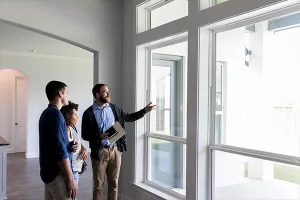Many of us remember a time when walking, and bicycling, to school was a part of everyday life. But times have changed. Walking and biking to school is not like it used to be in the good old days.

According to the Federal Highway Administration, about half of all students walked or bicycled to school in 1969. Today, fewer than 15 percent of all school trips are made by walking or bicycling. One-quarter are made on a school bus and over half of all children arrive at school in a car.
This decline in walking and bicycling not only has had an adverse effect on pedestrian and bicycle safety but also on congestion and air quality around schools. In addition, a growing body of evidence has shown that children who lead sedentary lifestyles are at risk for a variety of health problems such as obesity, diabetes, and cardiovascular disease. The Centers for Disease Control and Preventionpdf attribute some of that, in part, to fewer kids walking to school these days.
Some of the reasons why parents are reluctant to let their kids walk to school include distance, weather, missing sidewalks and crosswalks, high traffic speeds and volume, crime and personal security. Safety issues are a big concern for parents who consistently cite traffic danger as a reason why their children don’t bicycle or walk to school.

Safe Routes to School Programs (SRTS), which aim to make it safer for students to walk and bike to school, are trying to change this. And these programs are succeeding. The Safe Routes to School movement is increasing the number of children walking and bicycling to schools, and elsewhere, while improving personal safety.

SRTS programs examine conditions around schools and conduct projects and activities that work to improve safety and accessibility, and reduce traffic and air pollution in the vicinity of schools. Many of these efforts are sustained by parents, schools, community leaders and local, state, and federal governments who are finding ways to improve the health and well-being of children by enabling and encouraging them to walk and bicycle to school.

The Federal Safe Routes to School Program empowers communities to make walking and bicycling to school a safe and routine activity once again. The Program makes funding available for a wide variety of programs and projects, from building safer street crossings to establishing programs that encourage children and their parents to walk and bicycle safely to school.

The National Center for Safe Routes to Schools provides education, professional development tools and training to provide communities the technical support to create the momentum needed for lasting change They developed resources, provided technical assistance, and conducted marketing and program evaluation for the Federal Safe Routes to School program. The National Center continues to host the original Safe Routes to School Clearinghouse website containing resources, reports, tools and the Safe Routes to School Guide.

There are several ways to get involved in your community to make it safer and more welcoming for kids to walk or bike to school.
Probably the most popular way is to participate in the International Walk to School Day, a global event that involves communities from more than 40 countries walking and biking to school on the same day. Walk to School Day began in 1997 as a one-day event. Over time, it has become part of a movement for year-round safe routes to school and a celebration – with record breaking participation – each October.
International Walk to School Day 2017 is scheduled for October 4. If that day doesn't work for your school calendar or community plans, many schools plan and celebrate walk to school events throughout October.
Register your school’s event through the end of October to be counted among the thousands of schools who participate each year. Walk to School Day registration is free and open to anyone planning a 2017 event in the United States.
In 2016, ten elementary schools in Champaign-Urbana participated in the Walk n' Roll to School Day (WRTSD). Students walked and biked to school, where they were greeted and encouraged by friends, parents, teachers, and community members. Take a look at photos and videos from their Walk n’ Roll to School Day.

Another event is the National Bike to School Day which first took place on May 9, 2012 in coordination with the League of American Bicyclists' National Bike Month. Almost 1,000 local events in 49 states and the District of Columbia joined together to encourage children to safely bicycle or walk to school.
National Bike to School Day provides an opportunity for schools across the country to join together to celebrate and to build off of the energy of National Bike Month. Bike to School Day 2017 was held on May 10 but you now have plenty of time to plan to participate in the 2018 Bike to School Day which will be held on May 9.
Take look at what happened in Denver this year during Bike to School Day at Southmoor Elementary School.

The National Center for Safe Routes to Schools coordinates Walk to School Day and Bike to School Day in the United States. Today, thousands of schools across America – from all 50 states, the District of Columbia, and Puerto Rico – participate.
Walking school buses and bicycle trains are two ways to continue a community’s efforts after Walk and Bike to School Days or if your community missed participating in them.

Walking school buses are groups of children who walk designated routes to school under adult supervision, picking up kids along the way just like a bus. For some neighborhoods, it's a casual group walk, while others set up a formal plan with adults scheduled to walk on certain days. Some communities have good conditions for walking, but parents don't feel comfortable letting their children – especially younger ones – walk to school alone. For many of these parents, walking school buses may be the answer to this concern.
At Ephesus Elementary School, an informal walking school bus program with self-organized groups works well. In different neighborhoods, parents and children meet and walk to school together. Parents watch for the group to pass by their homes and join when they see them. If a parent cannot walk on a day, he or she contacts another walking parent to supervise their child on the way to school. Parents say that walking to school has been a wonderful way to meet other parents

Bicycle trains are based on the same concept as walking school buses. Bicycle trains provide a way for children to bike to school safely in a group with adult supervision, whether it’s during a special event or a daily trip to school.
Bicycle trains are more involved than walking school buses. But when a bike train is organized well, it can be a rewarding experience for both the students and the adult leaders.
The Mason bicycle train, part of the Mason Safe Routes to School Team Program, has become an integral part of Mason Elementary School’s (Duluth, GA) monthly “Walk and Roll to School Day” events. The train is staffed by volunteers from the local Gwinnett County Bicycle Users Group and a few Mason parents. The “engineer” leads the group, the “caboose” brings up the rear. Additional adults are interspersed between the children with a typical ratio of 1 adult to 4 children. The train has two starting “stations” in the morning and then the two groups are intended to meet and form one large train that rides down the highly-traveled road to the school. In the afternoon, the bicycle trains run back to their starting “stations.”

So, maybe it’s time for you to work with others in your community to get kids to start walking and biking to school again.









